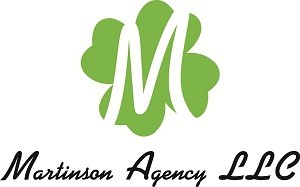What To Do After An Accident
November 9th, 2018 — Martinson Agency LLC — Chaska, MN
Being involved in an auto accident can be a trying experience – physically, emotionally and financially. Knowing the proper steps to take in the immediate aftermath of a crash can help ease the stress that is sure to follow. Here are five steps to take if you find yourself involved in an accident.
1. Assess The Situation
Auto accidents can range greatly in severity from a simple fender bender to those involving serious injuries and/or property damage. An important first step is to take a moment, calm yourself and assess the situation. Take note of the following:
- Are you hurt?
- Does anyone else appear to be hurt?
- Are you currently in a dangerous situation?
- Are there any witnesses?
These are all questions that you need to ask yourself before you do anything else.
2. Contact The Authorities
For the sake of safety and to help ensure that your insurance claim is processed smoothly, you want to contact the authorities and get them in route as soon as possible. Some drivers don’t react very well to being involved in an accident and in this age of road rage, it is not a good idea to confront the other drivers involved. Wait for police!
3. Exchange Insurance Information
Once it is safe to do so, exchange insurance information with the other drivers involved. The police will also be asking for this information to fill out their report so this is a good time collect it yourself. Your insurance company will need this information when you call to file your claim. (HINT: We always suggest taking photos of the other drivers ID as well as their insurance cards. This is always easier than trying to quickly write down all of this information!)
4. Document What Happened
To help speed up your insurance claim as well as to protect yourself legally you want to document the accident as much as you can. If possible, gather contact information from as many witnesses as you can and ensure they speak with the police when they arrive. Many cases turn into a he-said/she-said scenario and having corroborating accounts can be vital during the claims process. Take as many pictures as you can. Start with wide shots trying to capture as much of the scene as possible. Be sure to include skid marks, road signs and damage to all of the vehicles involved.
5. Call Your Insurance Agent
It doesn’t matter if you feel that you were at fault or not, you should contact your insurance company as soon as possible. Your insurance company is going to require an accident report and other documentation in order to process your claim. We always suggest that you get in touch with your agent first so we can help walk you through the claims process. We can help answer any questions that you may have prior to filing a claim.
The odds of having a car accident at some point in your lifetime are rather high. Knowing what to do at the scene of an accident will help you protect your rights and help the claim process go as smoothly as possible. If you have any questions or are interested in an auto quote please contact Martinson Agency in Chaska, MN today!
Don’t leave your insurance to luck! Call today!
Phone: (952) 314-4400
Email: jphagen@aibme.com
Website: www.martinsonagency.com

 Contact
Contact Email an Agent
Email an Agent

 Click to Call
Click to Call Get Directions
Get Directions


